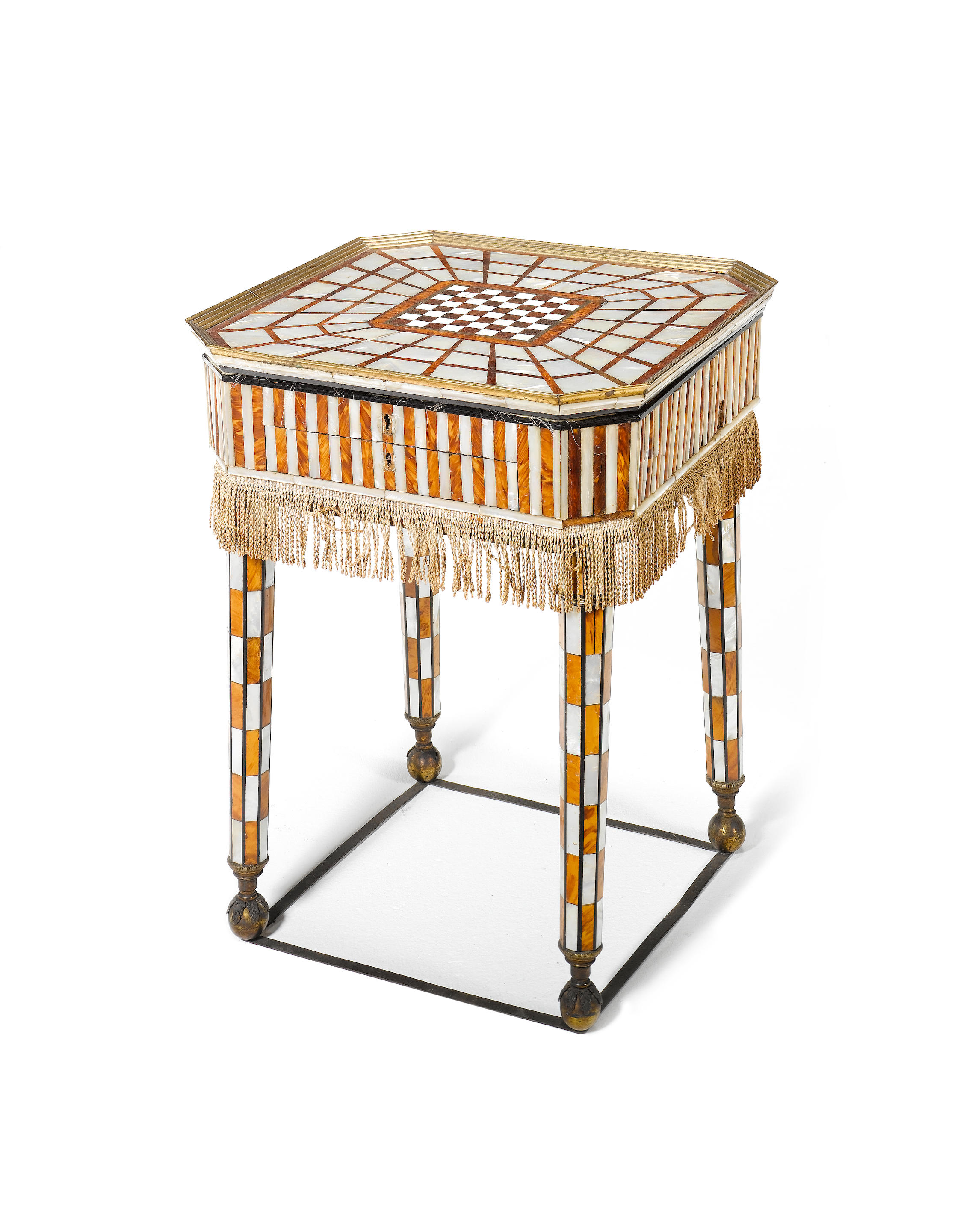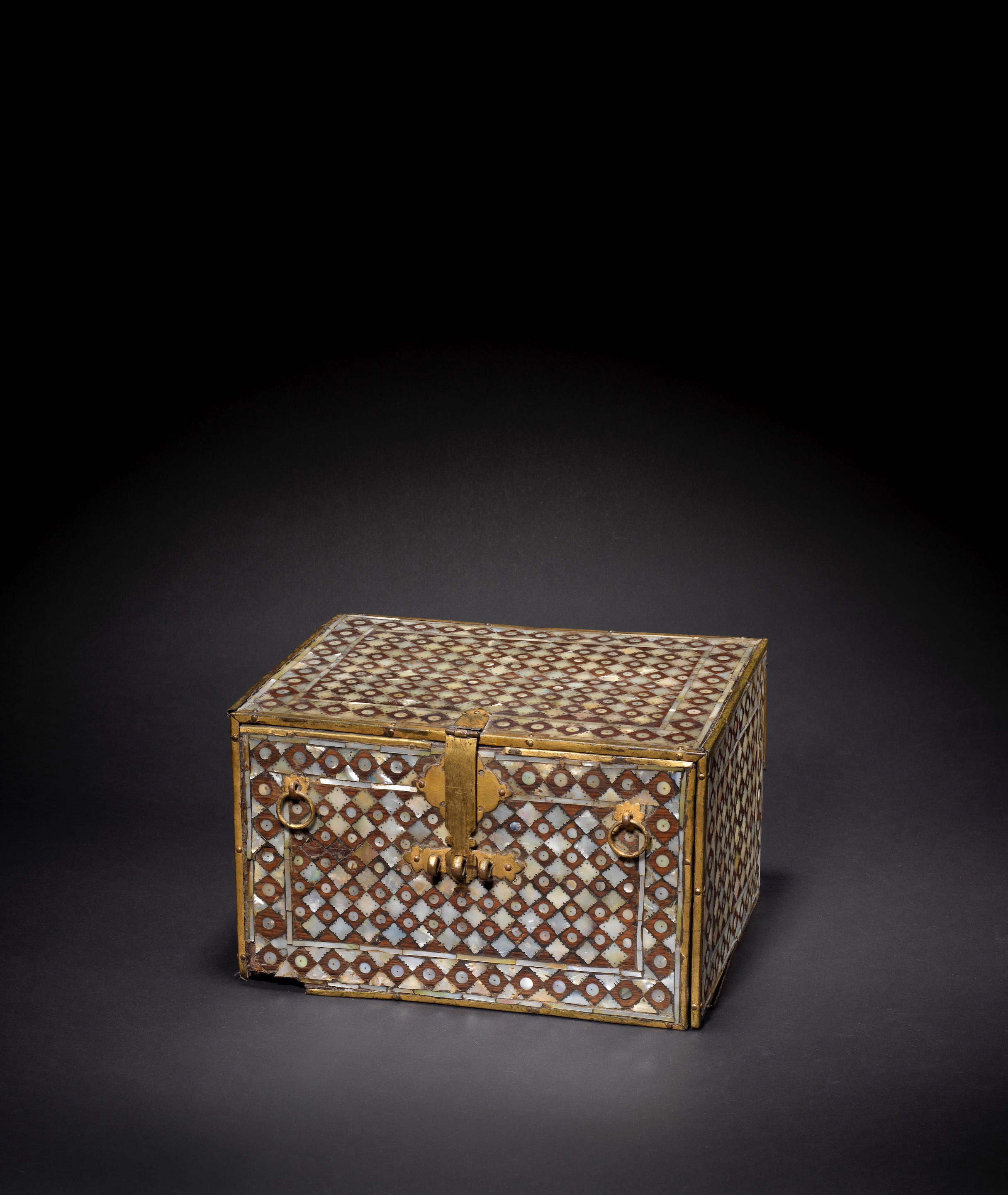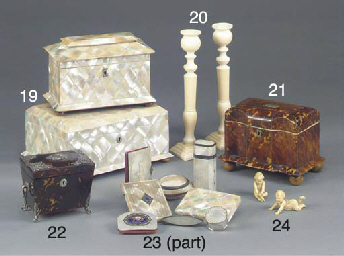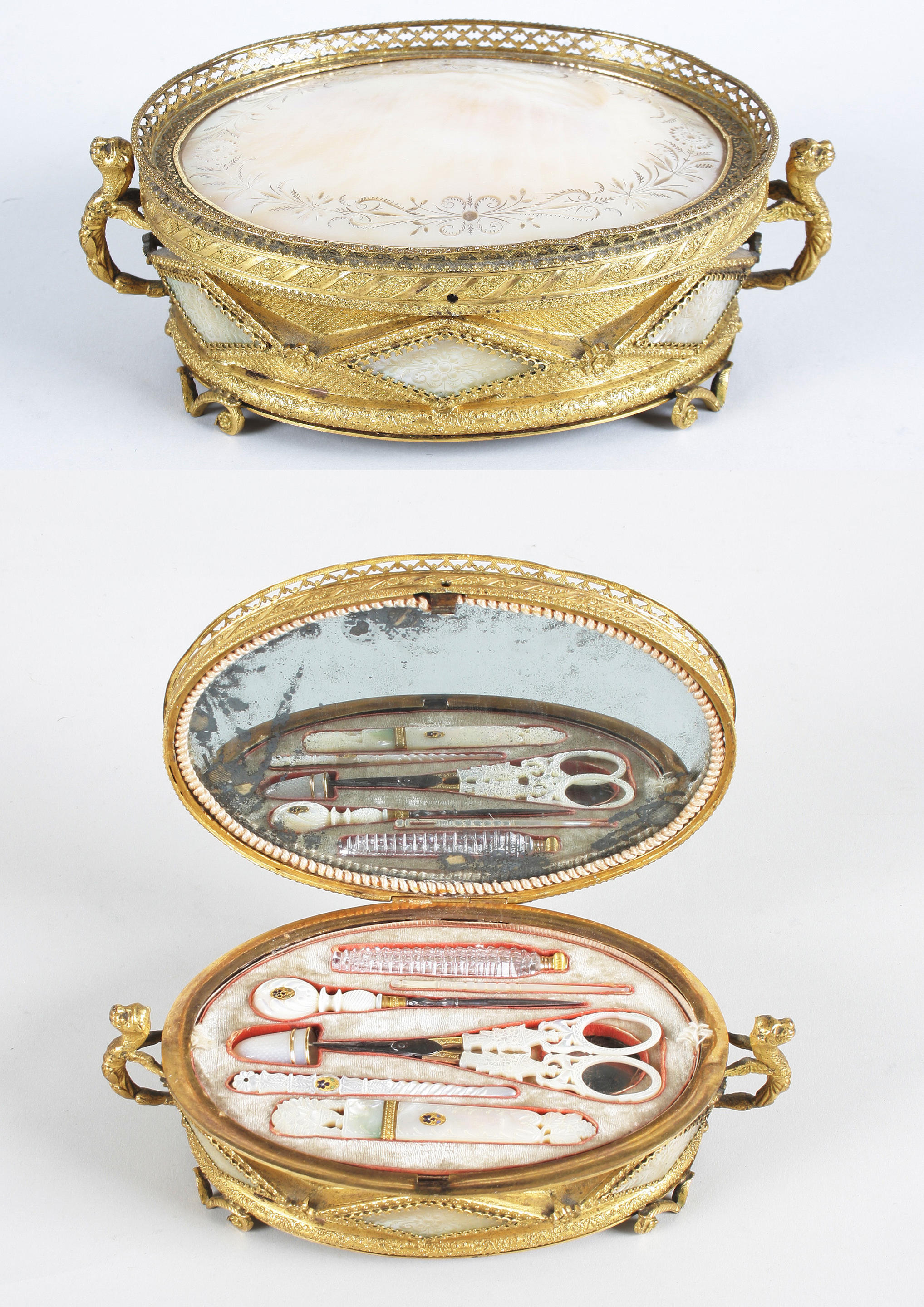A mother-of-pearl inlaid lacquer storage chest Joseon dynasty (1392-1897), 19th or early 20th century The rectangular chest fitted with two hinged doors opening to reveal six drawers of various size, decorated on the exterior of the doors and the sides with scholars and attendants enjoying tea beneath pine trees, or admiring fish in a stream, the upper surface with crane in flight above fruiting trees, and a central auspicious medallion, all bordered by grape vines or key fret bands, the interior of the doors with auspicious medallions and scrolling vines and the drawers decorated with blossoming peonies, chrysanthemums, peaches, prunus and bamboo, bronze hardware with traces of gilding and brass drawer pulls 22 x 25 x 16 1/4in (55.7 x 63.5 x 41.1cm) Fußnoten The decorative panels of Chinese sages under pine trees on the door fronts, as well as the key-fret pattern that frames the edges of this storage chest also appear in mother-of-pearl inlay on a lacquered wardrobe (nong) of typical Korean format in the collection of Tenri University Sankokan Museum, Japan, dated to the 19th-20th century in Uri nara shont'ong munaeiu (Korean Traditional Pattern 3: Lacquerware Inlaid with Mother-of-Pearl, Woodenware Adhered with painted Ox-horn Sheet) (National Research Institute of Cultural Heritage, 2005), no. 105, pp. 362-365). The same volume also reproduces a game board for go (badukpa) with similar mother-of-pearl inlay of four Chinese sages playing go in the Koryo Museum of art, Kyoto: no. 106, pp. 366-367, also dated to the 19th-20th century. However the shape of this lot mirrors a late 19th century two-door cabinet-on-stand of brown lacquered wood with shark skin, tortoise shell, mother-of-pearl and crimped wire inlays, in the Museum fur Lakkunst, Munster, published in Patricia Frick and Son-Chim Jung, Korean Lacquer Art: Aesthetic Perfection (Munster, 2012), no. 45, pp.186-189. The authors note in the entry that these cabinets, called gakkesuri (safe-chests) in Korea were inspired by Japanese ship captains' sea-chests (funadansu) introduced to Korea in the late Joseon period to Korea, and became highly valued in Korean households for keeping documents and other valuable items. The Museum fur Lakkunst cabinet is dated to the 19th century.
A mother-of-pearl inlaid lacquer storage chest Joseon dynasty (1392-1897), 19th or early 20th century The rectangular chest fitted with two hinged doors opening to reveal six drawers of various size, decorated on the exterior of the doors and the sides with scholars and attendants enjoying tea beneath pine trees, or admiring fish in a stream, the upper surface with crane in flight above fruiting trees, and a central auspicious medallion, all bordered by grape vines or key fret bands, the interior of the doors with auspicious medallions and scrolling vines and the drawers decorated with blossoming peonies, chrysanthemums, peaches, prunus and bamboo, bronze hardware with traces of gilding and brass drawer pulls 22 x 25 x 16 1/4in (55.7 x 63.5 x 41.1cm) Fußnoten The decorative panels of Chinese sages under pine trees on the door fronts, as well as the key-fret pattern that frames the edges of this storage chest also appear in mother-of-pearl inlay on a lacquered wardrobe (nong) of typical Korean format in the collection of Tenri University Sankokan Museum, Japan, dated to the 19th-20th century in Uri nara shont'ong munaeiu (Korean Traditional Pattern 3: Lacquerware Inlaid with Mother-of-Pearl, Woodenware Adhered with painted Ox-horn Sheet) (National Research Institute of Cultural Heritage, 2005), no. 105, pp. 362-365). The same volume also reproduces a game board for go (badukpa) with similar mother-of-pearl inlay of four Chinese sages playing go in the Koryo Museum of art, Kyoto: no. 106, pp. 366-367, also dated to the 19th-20th century. However the shape of this lot mirrors a late 19th century two-door cabinet-on-stand of brown lacquered wood with shark skin, tortoise shell, mother-of-pearl and crimped wire inlays, in the Museum fur Lakkunst, Munster, published in Patricia Frick and Son-Chim Jung, Korean Lacquer Art: Aesthetic Perfection (Munster, 2012), no. 45, pp.186-189. The authors note in the entry that these cabinets, called gakkesuri (safe-chests) in Korea were inspired by Japanese ship captains' sea-chests (funadansu) introduced to Korea in the late Joseon period to Korea, and became highly valued in Korean households for keeping documents and other valuable items. The Museum fur Lakkunst cabinet is dated to the 19th century.














Try LotSearch and its premium features for 7 days - without any costs!
Be notified automatically about new items in upcoming auctions.
Create an alert